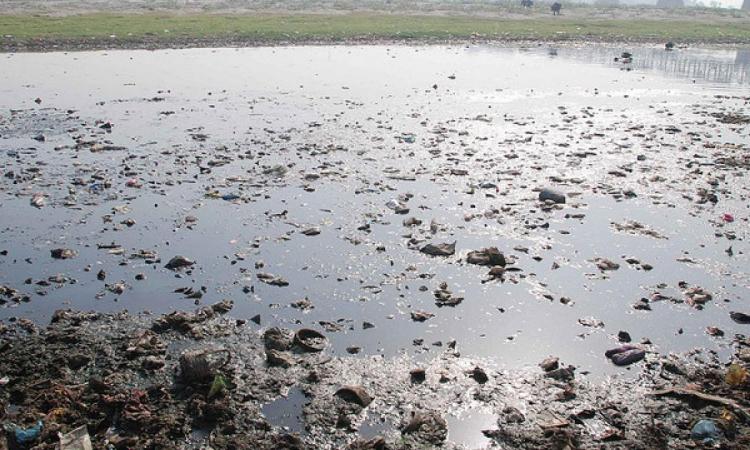
India is fast hurtling towards acute water scarcity. The reasons are many. While groundwater overdependence, changing rainfall patterns, poor water management practices are to blame, recent research shows that poor water quality is also adding up to this scarcity while also threatening the health of populations.
The recent scare in Pune city, Maharashtra where mosquito swarms resembling tornadoes were cited over Mula Mutha river in Khadki area is evidence enough. While these turned out to be red bloodworms, relatively harmless relatives of mosquitoes, their presence indicated the very high levels of pollution of the river due to high levels of nutrients such as phosphates, nitrates in the waters due to release of untreated sewage. Increasing nutrient overloads in our rivers causing high pollution are also increasing vulnerability of populations to a range of water borne and vector borne diseases.
And water pollution is projected to increase in India in the future increasing pressure on the fast diminishing and over exploited water resources. A recent study titled 'A triple increase in global river basins with water scarcity due to future pollution' published in Nature Communications aimed at assessing future global clean-water scarcity in 2050 under climate change scenarios and socio-economic changes.
‘Clean-water scarcity’ was defined as the availability of surface water with acceptable quality and assessed with a water quantity-based and a water quality-based indicator. The study assessed >10,000 sub-basins worldwide based on their river discharges (water quantity) and nitrogen pollution levels (water quality) for 2010 and three scenarios in 2050.
Global water scarcity assessments have mainly focused on water availability. However, decreasing water quality caused by increasing and newly emerging pollutants are also becoming significant issues needing attention due to the threats posed by them to health and biodiversity. For example, agricultural intensification and urbanisation have added pollutants such as nutrients, pathogens, plastics, and other chemicals to the water bodies.
Among the pollutants, excessive nitrogen (N) in aquatic ecosystems can lead to harmful algae blooms, hypoxia, and fish kills and to deterioration in water quality and limit use of water for household use and drinking, thus aggravating water scarcity.
The study found that:
- The current and future water scarcity projections become more severe when the clean-water scarcity assessment was applied. The number of sub-basins expected to face severe scarcity doubled in 2010 and tripled by 2050 in the clean-water scarcity assessment.
- The severe water scarcity hotspot sub-basins are mainly distributed in southern parts of North America, Europe, parts of Northern Africa, the Middle East, Central Asia, India, China, and Southeast Asia.
- Quality-based water scarcity hotspots are concentrated in the southern parts of North America, Europe, the Middle East, Southeast Asia, China, India, and parts of Northern Africa.
- The majority (2218; 88 percent) of the hotspot sub-basins experience clean-water scarcity dominated by nitrogen pollution.
- The clean-water scarcity hotspots cover 48 percent of the total drainage area, compared to 32 percent in 2010, and with 91 percent of the total global population living there, compared to 80 percent in 2010.
- Water scarcity hotspots are mostly found in sub-basins with intensive agricultural activities. These regions will receive 89 percent and 80 percent of the global nitrogen inputs from fertilisers and sewage/manure, respectively, in 2050 as compared to 84 percent for fertilisers and 53 percent for sewage/manure in 2010.
- In 2010, the total dissolved nitrogen (TDN) input to rivers was 106 Tg/year, with the highest loads occurring in China, India, Central Africa, South America, and parts of North America. In 2050, the total TDN inputs to rivers are expected to be 112 –147 kton/year. This corresponds to an increase of 6 –39 percent compared to 2010. Taking the worst-case scenario, this increase can be explained by the increased anthropogenic sources such as human waste and synthetic fertilisers.
- Sewage will become the dominant source of nitrogen pollution in rivers mainly due to the activities around fast urbanisation (i.e., population growth, more population connected to sewage systems in cities), and insufficient wastewater treatment technologies and infrastructures in this scenario in the water scarcity hotspots such as India.
- Countries such as India and Africa will experience nitrogen pollution primarily from agriculture in the first two climate scenarios, but sewage is projected to surpass agriculture as the main source of nitrogen pollution in the worst-case scenario.
The study underscores the urgency of addressing water quality in future water management policies to align with Sustainable Development Goals.
Preventing sewage from entering the rivers in India is the most important and urgent step that needs to be undertaken to save the rivers for the future.
/articles/sewage-will-overtake-agriculture-biggest-polluter-river-sub-basins-india